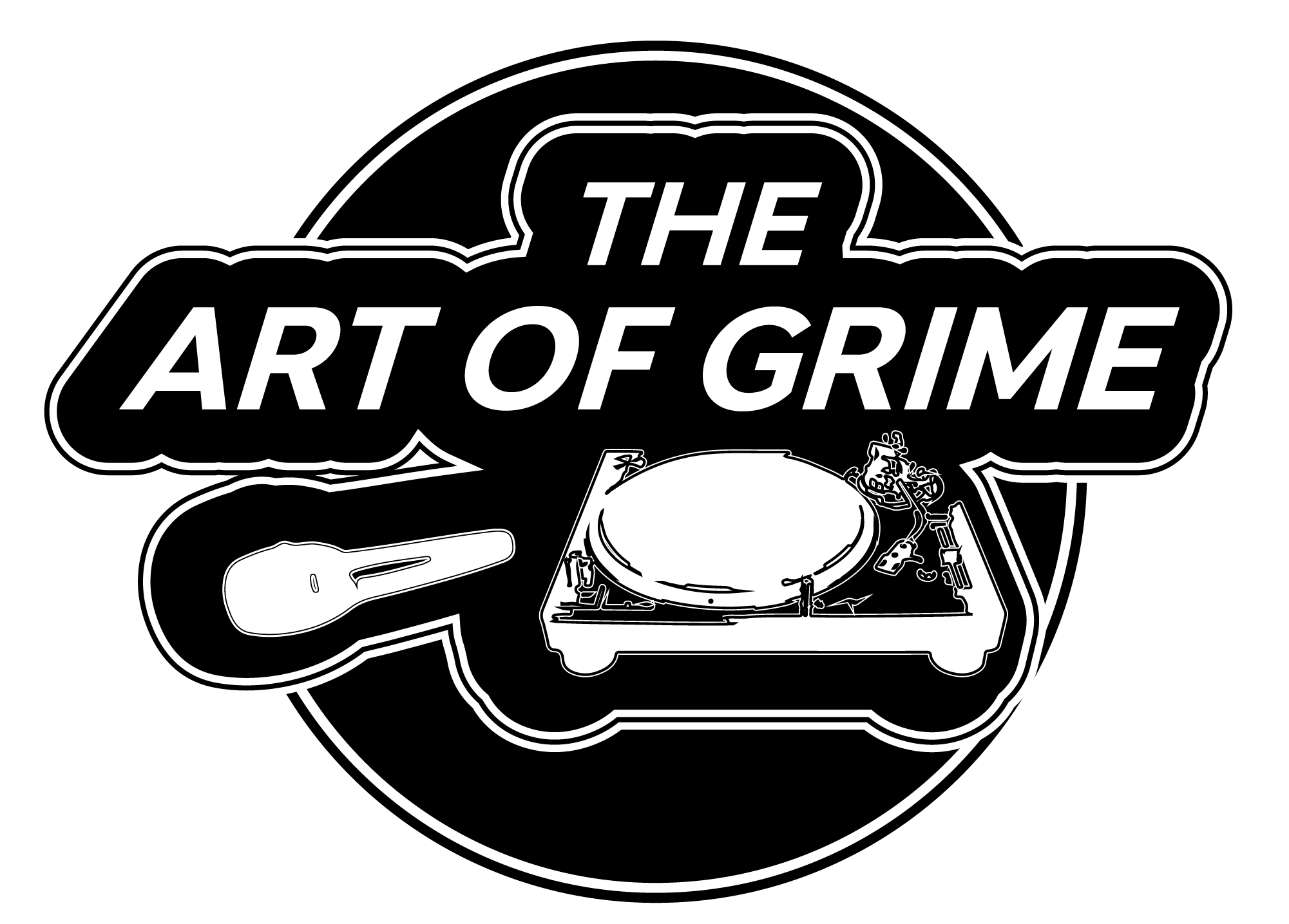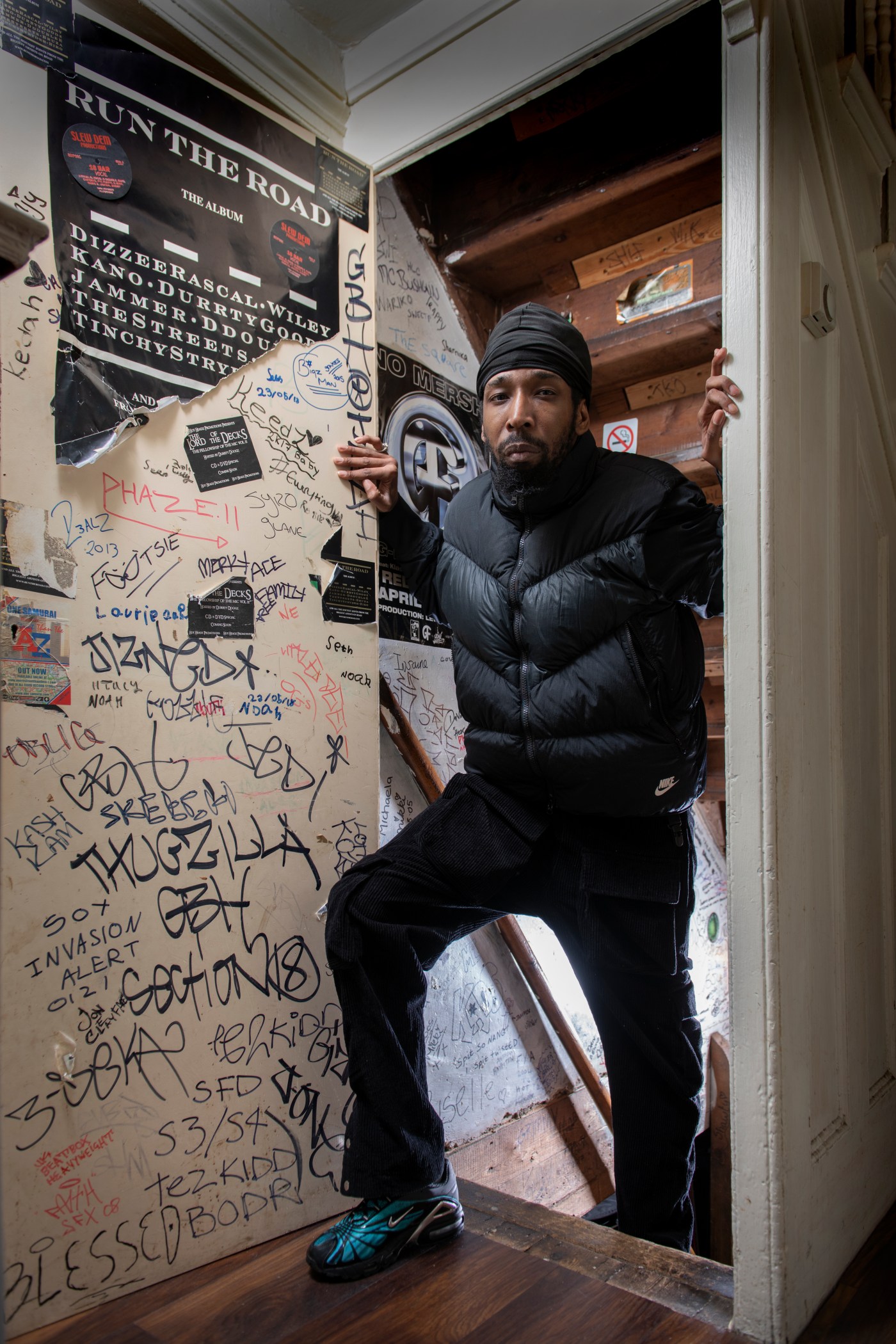Featured Image: © Museum of London / John Chase
A trip to the capital last weekend included a visit to the Museum of London to see ‘Grime Stories: from the corner to the mainstream’. A small exhibition created by Jammer and Roony ‘Risky Roadz’ Keefe, it documents the beginnings of grime through short films, equipment and interviews with both scene pioneers and academics.
The exhibition reflects the converging elements of grime. Here, the music is one part of a whole culture, made possible through community efforts, artists creating what they want to see in the world, and the dedication of regular, everyday people to keep the flame burning against a backdrop of gentrification and institutional pressures.
A short film shot in the basement describes how the space was a musical and cultural hub long before grime. Jammer’s dad, Jerry Power, explains how he made reggae music in the basement and how a young Jammer would be captivated by the instruments and happenings there, an insight into how his son cultivated a love for music.

It’s a reminder that the past informs the present and nothing exists in a vacuum. Passions, creative processes, and spaces were shared, passed down from generation to generation, and given time to grow and be nurtured. Jammer’s grime and his dad’s reggae share a musical lineage, but they also share a love and deep passion. Grime wouldn’t exist without the latter, and the short film makes this clear.
The other short film at the exhibition sees Roony ‘Risky Roadz’ Keefe speaking to academic Dr Joy White while taking a drive through London. They discuss gentrification and its impact on grime, with White explaining that the process of gentrification stops creative forces like grime from thriving. She notes how this type of policy is communicated as a good thing but stops young people from having anywhere to go, therefore handicapping cultural movements.
This assessment adds credibility to the exhibition. It’s an analysis from someone with the lived and academic experience and left me thinking about grime’s steadfastness in the face of institutional adversity.

Grime has had to deal with the dismantling of its infrastructure. Pirate radio stations were closed, record stores and venues turned into upmarket coffee shops, and any live events that could go ahead were thwarted by Form 696. The scene adapted to the changes. Mixtapes replaced white labels, and radio shows took place on legal stations. When the streaming era hit, artists responded by adapting their approaches again in the best way possible. The scene became acclimatised to the process of releasing music digitally, and when they found that it wasn’t rewarding financially in the way it should, they got to grips with Bandcamp to readdress the imbalance caused by such companies.
The government scrapped Form 696 in 2017, but the scene still faces challenges when putting on live events. Rents are rising on the venues of various cities, with developers keen to build new houses and bars in their place, ignoring the cultural things said venues can and have incubated over the years. Worse still, some venues still associate grime with trouble, a quite frankly racist view that misses the bigger picture of the scene and what it stands for. These things are the realities of White’s points about gentrification killing grassroots scenes.
However, what remains is grime’s resoluteness. Grime is here to stay, and this exhibition, along with books such as ‘Terraformed’, ‘This Is Grime’, and ‘Inner City Pressure’, means the genre has the correct documentation to contextualise it. ‘Grime Stories: from the corner to the mainstream’, then, is a look at what happens when burgeoning artists are allowed the time, space and care to create something new.

Grime Stories: from the corner to the mainstream is free to visit at The Museum of London.

